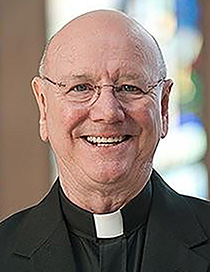
Faith
A most important corollary to the idea of liturgy as "summit and source" is the constitution's insistence that the "full, conscious, and active participation" of the faithful is the primary aim to be considered in the reform of the liturgy.

SJ
The draft of Vatican II's Liturgy Constitution (Sacrosanctum Concilium) was debated during the first session of the council in 1962, approved in November 1963, and promulgated on Dec. 4 of the same year. In this article and the one that follows, I will detail the fundamental goals of the constitution as well as some of its most important principles.
The introductory paragraphs of Sacrosanctum Concilium are programmatic since the aims of the constitution were the aims of the council in general: enhancing the life of the church, adaptation to contemporary culture, ecumenical advance, and evangelization. (SC 1)
Next comes a potentially revolutionary affirmation: the liturgy is the primary manifestation of the church. This relativizes the institutional, hierarchical, and structural elements of the church in favor of the church's manifestation in coming together to worship. (SC 2) The importance of this priority plays out in a pastoral way when the communal nature of all liturgy is emphasized. (SC 26-32)
The second fundamental theological principle in the document is equally as important: the liturgy is, first of all, the action of Christ in the midst of his people. SC quotes a classic liturgical text to the effect that every time it is celebrated the Eucharist "the work of our redemption is accomplished." (SC 2, The Prayer over the gifts for Holy Thursday and for the Second Sunday in Ordinary Time)
This activity of Christ relies on the unity of the human and divine in Christ: "humanity united with the Word of God" (SC 5), i.e., the Incarnation. Without this unity, there would be no foundation for sacramental theology as the Catholic Church understands it. The constitution then links incarnation with the Paschal Mystery (the passion, death, resurrection, and ascension) as the apex of Christ's activity. The use of "Paschal Mystery" is significant because much of Catholic theology of sacramental theology in the second millennium focused solely on the passion and death of Christ as salvific. Including the resurrection and ascension of the Lord makes it clear that it is the Risen Lord who is active in the liturgy. It is through the making-present of the Paschal Mystery that Christ's priestly office is exercised. (SC 7) It should be noted here that the constitution pays little attention to the role of the Holy Spirit. This omission is remedied in subsequent conciliar documents like the constitution on the church.
In addition, the constitution introduces (I believe for the first time in official Catholic teaching) the notion that Christ is present in four different ways in liturgical celebrations: in the person of the ordained minister, (especially) in the Eucharistic elements, in the proclamation of the word, and when "the Church prays and sings."
Pope St. Paul VI reiterated this four-fold participation in his encyclical on the Eucharist (Mysterium Fidei, #35-39) issued while the council was in session (1965). There, the pope asserted that this four-fold presence of Christ is real, i.e., that his presence in the assembly, the word, and the minister are no less real than that in the consecrated Eucharistic elements. The same affirmation is repeated in the General Instruction of the Roman Missal (2002, #27).
At this point, the document proceeds to define the two-fold purpose of the liturgy as glorification of God and the sanctification of the people. Hence, the liturgy is "the summit (glorification) toward which the activity of the Church is directed; it is also the fount (sanctification) from which all her power flows." (#10) The liturgy doesn't exhaust the activities of the individual Christian or of the church, but it is central and indispensable. It's also important to note that the glorification of God and our sanctification are intimately related. We are made holier when we praise and glorify God, and God is worshiped and praised when we grow in holiness.
A most important corollary to the idea of liturgy as "summit and source" is the constitution's insistence that the "full, conscious, and active participation" of the faithful is the primary aim to be considered in the reform of the liturgy. (SC 14) Citing I Peter 2:9 on the common baptismal priesthood, the document's rationale for this kind of participation is based on the baptismal status of Christians, not a delegation, as it were, from above, i.e., from the church's hierarchy. Full, conscious and active participation is our right and our obligation because of our baptismal adoption by God and our incorporation into the Body of Christ, the church. This affirmation is clearly one of the most important theological statements of the constitution and has had enormous pastoral consequences as well.
Next week, we will continue our consideration of the important theological principles of the Liturgy Constitution.
Recent articles in the Faith & Family section
-
The Eucharistic Prayers -- variety and similarityFather Robert M. O'Grady
-
A Most Unusual Mission MosaicMaureen Crowley Heil
-
A new windScott Hahn
-
Scripture Reflection for May 19, 2024, Pentecost SundayJem Sullivan
-
Can I go to a Methodist church since there are no Catholic churches nearby?Jenna Marie Cooper


















